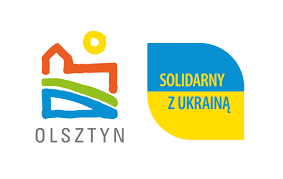Town twinning, sister cities or partner towns is a concept whereby the local governments of different countries aim to foster human contacts and cultural links between inhabitants of the cities or towns, which are paired in geographically and politically distinct areas. Such an idea came into being at theend of the Second World War and was thought as the way to overcome European crises by collective actions. The practice, based on the idea of common cultural heritage of European civilization and, above all, on such values as freedom, human rights and solidarity, was believed to serve best peace and democracy Nowadays the town twinning seems to be a natural element of self-government policy, which role is to make ground for agreements that would enable further, close contacts between various communes. Official agreements and visits foster such a cooperation and friendly atmosphere. The essence of those contacts is, above all, direct involvement of the inhabitants of given communes, members of organizations, local associations, clubs or schools. Nowadays the character of those links is extremely varied – ranging from spontaneous cultural, social and sporting events to close, well-organised cooperation, making use of expert knowledge.
Olsztyn established town twinning arrangements with eight European cities and one metropolis of the United States of America. They all follow a traditional model of cooperation based upon the presumption that mutual contacts foster better understanding between the partners. Initially, the town twinning contacts of Olsztyn took on a form of school trips, medical internship programs, exchanges of teachers, performances of folk groups, visits of councilmen and participation of craftsmen or manufacturers in local fairs. Olsztyn was visited by specialists, representatives of local governments, sports groups and artistic bands, not to forget …. Santa Claus of Lapland.
I. Town Twinning Agreements:
Kaliningrad /Russia/ – in the 1970s, after a few-year break, on 5 March 1993 the agreement was re-established
Rovaniemi /Finland/ – 1976
Calpe /Spain/ – March 1989, cooperation has not been resumed
Châteauroux /France/ – 23 February 1991
Gelsenkirchen /Germany/ – 1992
Richmond /Virginia, U.S.A./ – 1995
Lutsk /Ukraine/ – 19 December 1997
Offenburg /Germany/ – 19 March 1999.
II. Cooperational Agreements
Sondenborg /Denmark/ – July 1994 (agreement on environmental protection)
Halmstadt /Sweden/ – November 2003
Perugia /Italy/ – December 2004
The first partner agreements of Olsztyn were the only formof contacts that established and enabled cooperation with foreign countries as the then political barriers made it impossible to maintain any contacts with Western Europe. After the year 2000 the cooperation formulae between various cities of different countries have been influenced by integration processes taking place in Europe. The cooperation started to bring calculable benefits and its development was fostered by programs and financial support of the European Union. The very first agreement of that type was established in November 2003 between the mayor of the Swedish city of Halmstad, the capital of the coastal region of Halland and the President of Olsztyn. A year later, in December 2004, the region of Warmia represented by the city of Olsztyn and poviat starosties of Olsztyn, Braniewo and Lidzbark Warmiński entered into a twinning arrangement with the Italian province of Perugia. The agreement was thought to bring both cities social and economic benefits. In July 2003, during the celebration of the 650th anniversary of granting Olsztyn the city rights, the representatives of the European sister and cooperating cities signed a declaration on continuation of the cooperation with Olsztyn. The meeting was an ideal opportunity to establish new contacts between the cities.
 Logo
Logo



